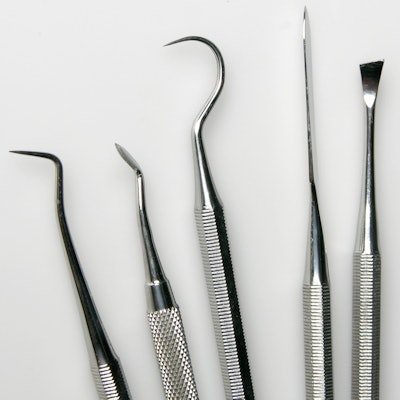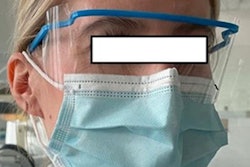
A radical vapor reactor (RVR), which eliminates germs by producing high levels of reactive oxygen species, may offer a quick, low-cost way to sterilize dental instruments, according to findings published in the February issue of Process Biochemistry. The radical vapor reactor completely sterilized dental instruments in packing bags.
Because the device relies on oxygen gas and water to generate reactive oxygen species, it can reduce the environmental load and consume less energy than other sterilization methods. The device has shown promise as a powerful tool for microorganism sterilization in prior biochemical research, according to the authors.
"RVR has the potential to become a new sterilization technique for dental instruments," wrote the group, led by Dr. Kaede Okita from Kyushu Dental University in Kitakyushu, Fukuoka, Japan (Process Biochem, February 2022, Vol. 113, pp. 22-26).
Putting RVR to the test
To confirm the effectiveness of the radical vapor reactor, the authors tested the device on diamond burs, endodontic files, scalers, excavators, dental explorers, and vacuum tips soaked in Streptococcus mutans for 15 minutes. They chose S. mutans because it is the most common bacterial cause of tooth decay.
All instruments were then soaked in distilled water for 10 minutes and dried at 25° C. Finally, the instruments were placed in the RVR chamber and treated at different time intervals up to 10 minutes.
After treatment, each instrument was picked up using bacteria-free tweezers and placed into 14-mL culture tubes with 5 mL of brain heart infusion medium. The instruments were incubated for 24 hours.
The researchers confirmed sterilization based on the presence or absence of growth. The group also repeated the process using instruments placed in packing bags.
All dental instruments were sterilized in 10 minutes or less, even with the use of packing bags, Okita and colleagues reported.
Future of dental sterilization?
The radical vapor reactor used in the study has been employed in other fields for surface cleaning and polymer decomposition, according to the authors. It has proved effective for Escherichia coli and Bacillus subtilis, and the new research adds S. mutans to the list.
The device has several advantages over methods currently used to sterilize dental instruments. Autoclaving is likely the most popular sterilization method, but it takes more than one hour. Ethylene oxide gas and disinfectants are also used, but they contain toxic chemical residues.
The evidence suggests that RVR sterilizes instruments much faster than autoclaving. Also, it is a low-cost, low-environmental-load, and low-energy technique, Okita and colleagues concluded.
"The sterilization technique that uses RVR is effective in the dental field because dental instruments requiring sterilization are produced in large amounts every day," they wrote.


















